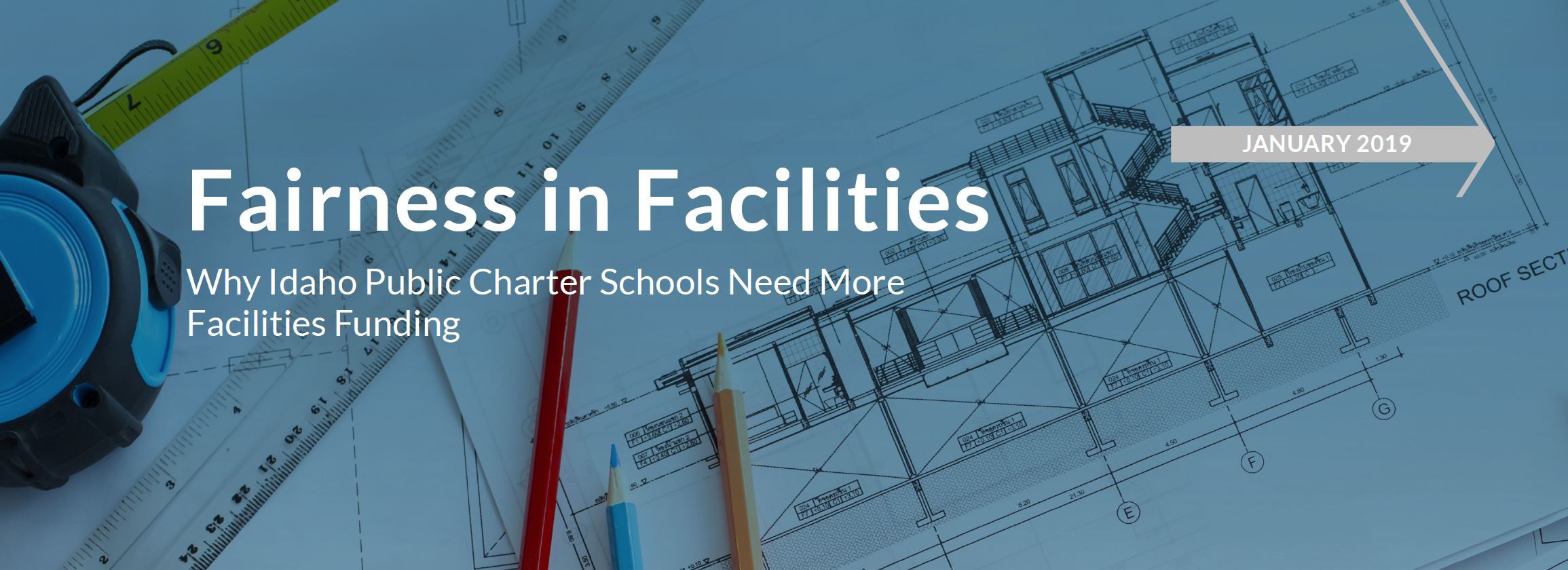
The Squeeze – A case for fairness in facilities and funding in Idaho
by Terry Ryan & Marc Carignan
published by Idaho Education News 1/15/19
Charter schools in Idaho educate more than 23,000 of our public school children, and if all of these students were in a single school district it would be the state’s third largest district after West Ada and Boise. It would also be one of the state’s fastest growing public school districts. According to a recent report by Idaho Ed News, there are currently more than 11,000 students on wait lists to get into an Idaho public charter school.
Yet, despite their successes, charter schools face the paradox of having to build schools with fewer public tax dollars, at higher financing costs and in some cases while paying more in local fees and taxes. How can this be?
Unlike their public district school brethren, public charter schools do not have access to local property taxes or public tax levies, which means charter schools often face a financial squeeze. This lack of access to traditional local funding sources for charter school construction financing means charter schools are dependent on costlier private bond markets and/or traditional bank financing.
Public charter schools also receive less per pupil tax payer funding. On average, charters in Idaho receive state funding of just $445 per student, while public school districts on average receive $1,206 per student in both state and local dollars. As a result of this squeeze, public charter schools pay higher interest rates and more fees than their district peers.
To document the financial challenges facing Idaho public charter schools, and to help us find ways to improve how charters finance facilities in the Gem State, we engaged the research team at Bellwether Partners. In 2016, Bellwether issued Building Excellence: How Helping Charters Access Facilities Can Improve Opportunity for Idaho Kids. In that report, the crack research team at Bellwether surveyed 26 of the state’s brick and mortar charter school leaders (which represented about 65 percent of the charters in Idaho), and fully half of the respondents “agreed or strongly agreed that they had to make ‘substantial compromises to what we wanted’ when securing a facility for their school.”
Fast forward to 2018, and charter schools are still making compromises. In their new report, Bellwether highlights Future Public School in Garden City that opened its doors in August of 2018. The school saved substantial expense by negotiating an agreement with the local Boys and Girls Club to share their gym and cafeteria spaces that are vacant during the school day. The two organizations signed a 30-year joint-use agreement. The agreement provides Future Public School with exclusive access to the Boys and Girls Club during the school day, and the Boys and Girls Club with exclusive use of the school’s learning spaces after school and during the summer.
Doing more with less is noble in public education. This is something quality public charter schools do well. It is also something, we readily admit, that cash-strapped rural and high-need schools across Idaho know all too well themselves. Fact is, it is well documented that all of public education in Idaho operates on leaner rations than do schools in most parts of the United States.
But charters in Idaho face a special financial challenge when it comes to financing their facility costs. In Bellwether’s new report, Fairness in Facilities: Why Idaho Public Charter Schools Need More Facilities Funding, the research team documents that:
- In Boise, Future Public School’s per-seat cost was half that of the least expensive elementary school built by the Boise Public School District ($13,123 vs. $26,751).
- In West Ada, Compass Charter School’s per seat cost was 25 percent lower than the least expensive of West Ada’s new construction projects ($16,958 vs. $23,958).
- In Middleton, Forge International’s per-seat cost was half that of the Middleton School District’s proposed new school ($15,571 vs. $31,580). It’s per-square-foot costs were even lower ($196 vs. $316).
Making matters even harder for Idaho’s public charter schools, Bellwether documents how some local jurisdictions in Idaho charge impact fees on new charter school construction. Compass Public Charter School in Meridian, for example, had to pay hundreds of thousands of dollars in “impact fees” while the West Ada School District had their fees waived.
All Idaho children deserve to be educated in safe and functional buildings. This is true for both public district schools and public charter schools, and now is a great time to start making some progress. We encourage you to join the conversation, as our children’s future, and the future of our great state depend on it.
–




